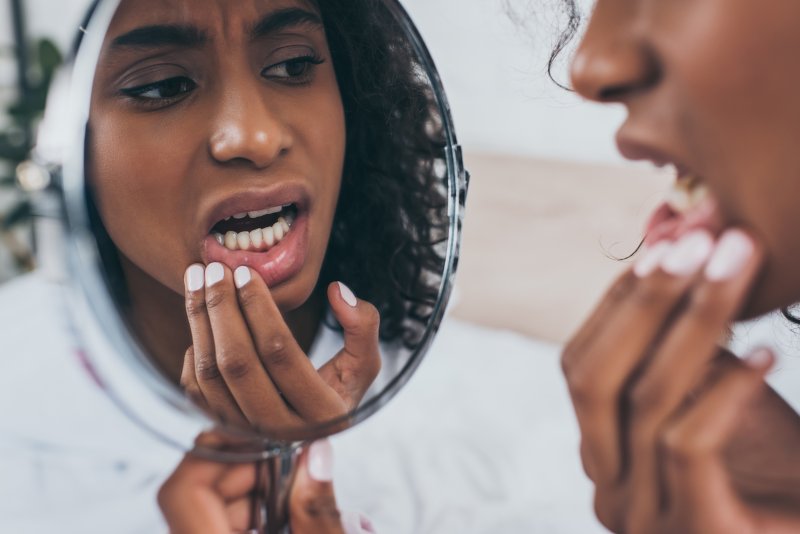
It’s just a normal morning, but you notice something strange while you’re brushing your teeth. They seem…different. It’s like they’ve moved and are more crooked than before. Is this even possible?
Yes, your teeth can definitely shift as an adult, but what’s causing it in your case? You’ll find the three most prominent reasons below as well as advice on how to make it stop.
Missing Teeth
About 120 million Americans are missing at least one adult tooth, and while a single space toward the back of your mouth might not seem like a big deal, your body disagrees.
When a tooth goes missing, the jawbone that used to support it starts to weaken and shrink. That’s because with the tooth being gone, the body sends less blood and nutrients to the area. As the bone changes shape, this can cause the neighboring teeth to move because the “ground” beneath them is changing.
Gum Disease
Also known as periodontal disease, this is a bacterial infection that affects not just your gums, but the roots of your teeth and underlying jawbone as well. The early stage involves some slight redness and gums that bleed easily, but left untreated, it can become a much more serious problem.
If the bacteria are allowed to get deep into the gums and thrive, it can start to break down the tooth roots and bone, which can make them loose and prone to movement. Often, unaddressed periodontal disease results in tooth loss!
Orthodontic Relapse
This is the technical term that refers to a problem many people have faced over the decades—their teeth become crooked again after undergoing braces or Invisalign. It usually happens months or years after treatment has been completed because the patient stopped wearing their retainer as directed. As a result, their teeth naturally started to move back to their original positions.
When the teeth are shifted with orthodontics, a lot of tissues have to remodel to make this happen—bones, ligaments, blood vessels, etc. After braces come off, the body will want to bring the teeth back to where they started because that’s “normal.” A retainer prevents this and allows the tissues in your mouth to adapt and “settle” so they become fixed in their new orientation.
How to Stop the Shift
Thankfully, preventing tooth loss and gum disease just requires you to brush for twice a day at least two minutes each, floss, and visit your dentist in Schoharie at least twice a year for a checkup. This will stop problems like cavities or gum disease from advancing to the point that they could affect the stability of your teeth.
And if you’ve been prescribed to wear a retainer, simply follow your orthodontist’s instructions. If you can’t find your retainer or your teeth are slightly crooked again, contact your orthodontist, and they can provide you with a new one as well as offer a way to move your teeth if needed.
If you notice that your teeth seem a little off, it’s not just your imagination! Improving your hygiene habits and using your retainer can prevent the issue from getting worse, and your dentist/orthodontist is always available to help you get (and maintain) a beautifully straight smile.
About the Practice
Schoharie Dental is a multi-specialty dental practice that includes a team of general dentists, pediatric dentists, and an experienced orthodontist, Dr. Cheryl Sorbero. She has over 15 years of experience and helped countless patients straighten their teeth with both braces and Invisalign. If you think your teeth might be moving (and you want to make it stop), click here to request an appointment or call (518) 254-5664.
